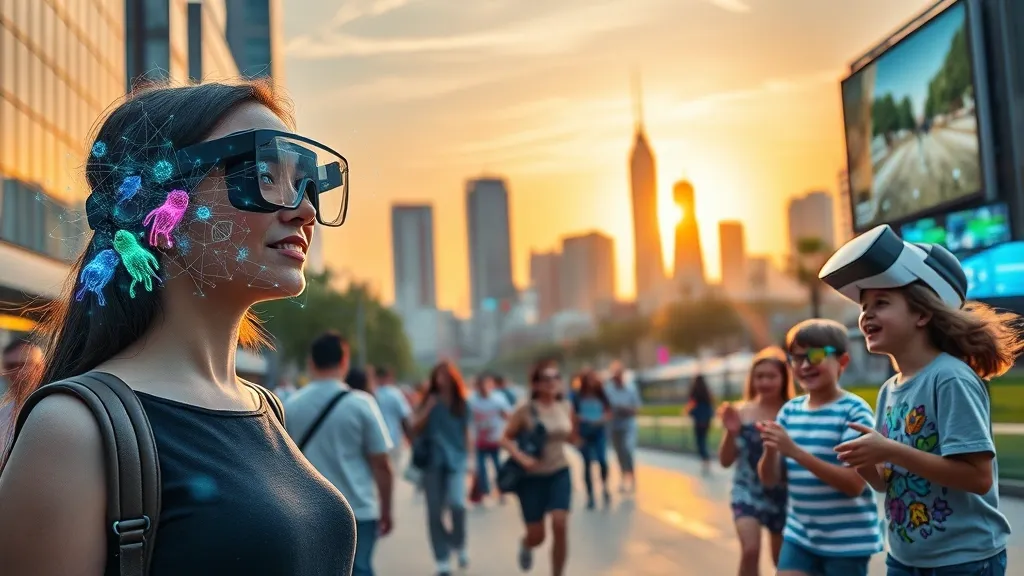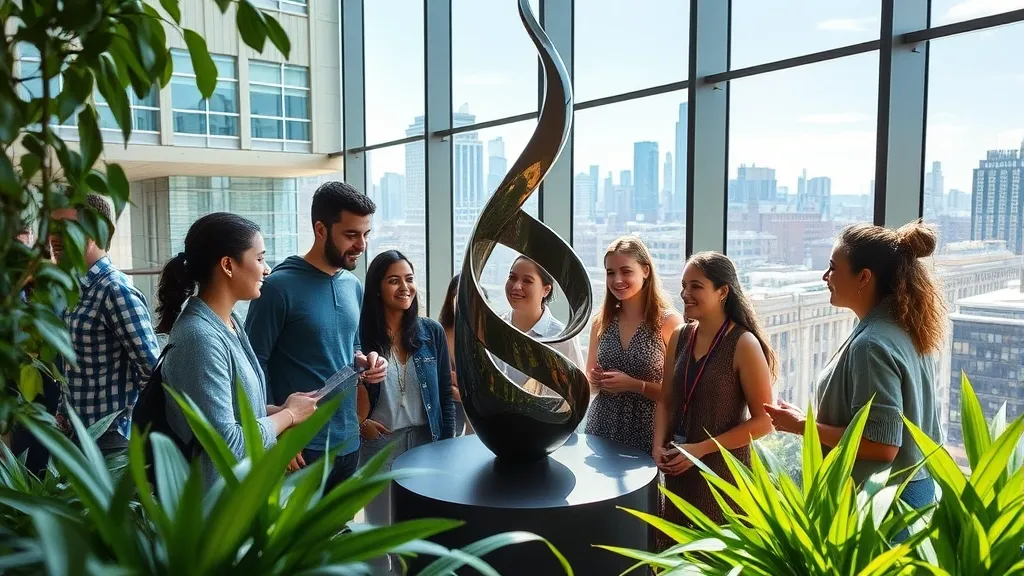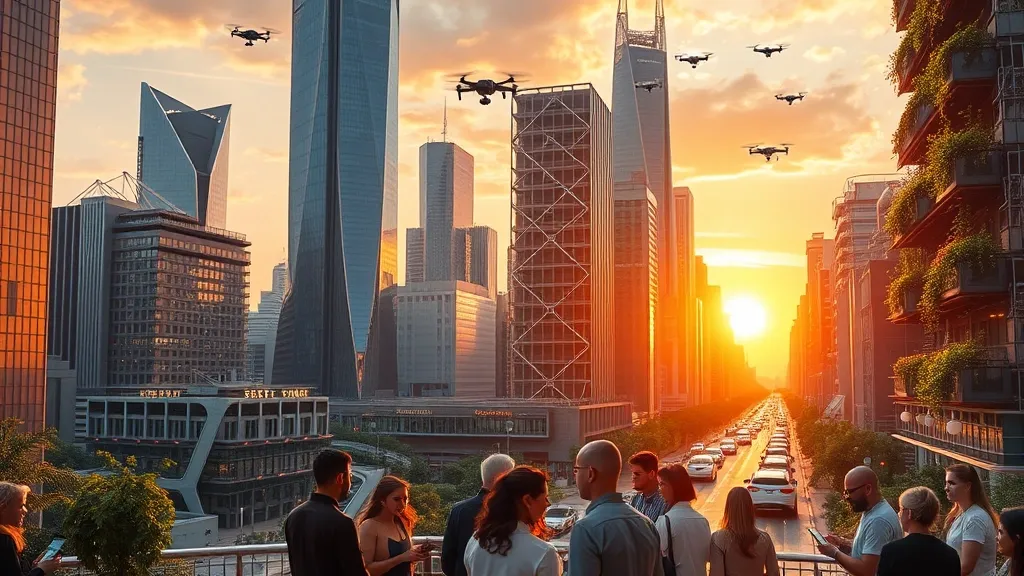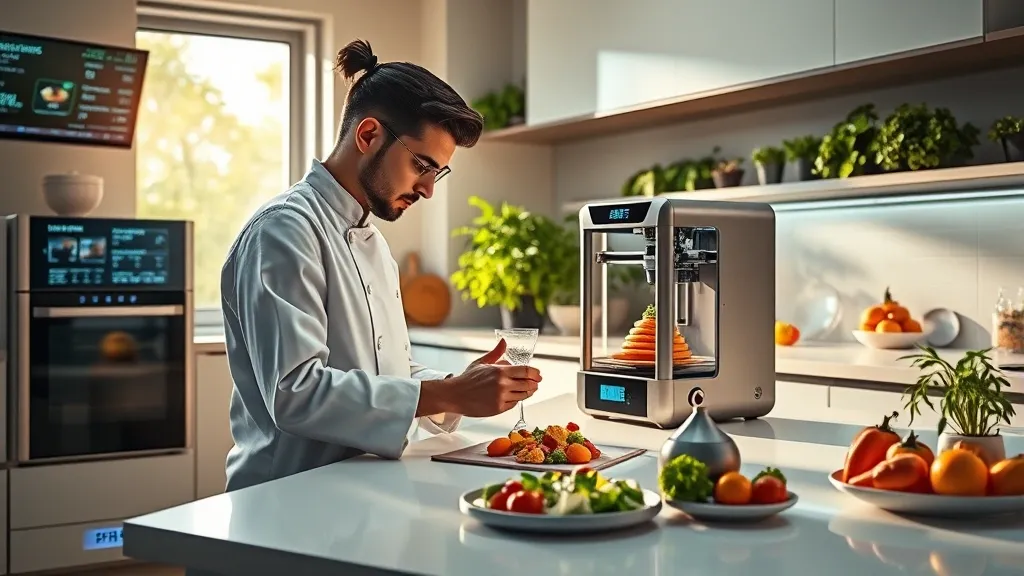Beyond Reality: The Blurring of Lines
So, let’s chat about this wild world of XR technology. You know, virtual reality (VR), augmented reality (AR), and mixed reality (MR) are all hanging out together now, and honestly, it’s kinda mind-blowing. It’s like they’ve thrown a party where the boundaries of what’s real and what’s not are totally up for debate. I mean, who would’ve thought we’d be living in a time where you could literally hang out with your favorite fictional character in your living room? Seriously, I tried it once, and let me tell you, Iron Man made my couch look way less comfy.
These technologies aren’t just for gamers or tech nerds anymore. Nope! They’re creeping into our everyday lives in ways that are hard to ignore. Think about it: AR filters on social media have become a daily ritual for some folks. I mean, who doesn’t love turning into a cute puppy or a fairy princess for a hot minute? But it’s not just about looking silly on Instagram. In the professional world, XR tech is shaking things up, too. Architects use VR to walk clients through buildings before a single brick is laid. It’s like having a crystal ball, but way cooler.
And let’s not forget about education! Students can dive into historical events, exploring ancient civilizations as if they’re on a field trip without ever leaving the classroom. How awesome is that? But, here’s the kicker—while we’re all busy being amazed, it raises some serious questions about what’s real. I mean, if a kid learns about dinosaurs through an immersive AR experience, does that count as a real educational experience? Or is it just a fancy video game?
There’s definitely a fine line here that’s getting blurrier by the day. As we step into this new reality, it’s essential to think about how this tech impacts our perception of the world around us. Are we losing touch with the real stuff? Or are we just finding new ways to experience it? Personally, I think there’s a balance to be struck. We can enjoy the wonders of XR while still appreciating the beauty of the world outside our screens.
In the end, the question isn’t just how XR is transforming our lives, but how it’s reshaping our understanding of reality itself. It’s kinda like that moment when you realize the ice cream truck jingle isn’t actually a magical song—it’s just a dude trying to sell popsicles. But hey, sometimes a little magic in our lives isn’t such a bad thing, right?
XR in Action: Transforming Workspaces and Classrooms
Okay, so let’s dive into how XR technology is shaking things up in our workspaces and classrooms. I mean, who would’ve thought we’d be using virtual reality (VR) to teach algebra or augmented reality (AR) to conduct meetings? It’s wild, right? But honestly, it’s kind of exciting, too!
First off, let’s talk about workspaces. Gone are the days of boring conference rooms with stale donuts and awkward small talk. Now, companies are adopting XR to create immersive environments where teams can brainstorm and collaborate, no matter where they are. Imagine sitting in your living room, but you’re actually in a virtual boardroom with your colleagues from around the globe. You can throw around ideas, share 3D models, and even take virtual coffee breaks. It’s like being in a sci-fi movie, minus the flying cars (though I’m still holding out for that).
And then there’s training. XR is a game-changer here, too. Instead of staring at PowerPoint slides and trying not to fall asleep, employees can jump into simulations that replicate real-life scenarios. For example, a medical student can practice surgery in a virtual setting without the pressure of, you know, actually cutting someone open. Pretty cool, right? It’s like having a safe playground for learning. Plus, it’s way more engaging than the usual lecture format. Who wants to sit in a dull classroom when you can be the star of your own virtual adventure?
Now, let’s swing over to classrooms. XR is opening up a whole new world of possibilities for students. Imagine learning about ancient civilizations by exploring a virtual Rome or walking through the solar system to understand the planets. It’s like field trips on steroids! Kids can actually see and interact with what they’re learning, making it way easier to remember stuff. And let’s be honest, anything that can make history a bit less boring is a winner in my book.
- Enhanced engagement and motivation
- Hands-on experience without real-world risks
- Personalized learning experiences
So, whether it’s in a corporate office or a school, XR is definitely transforming how we learn and work. It’s like taking the mundane and flipping it on its head. Who knew that tech could make our professional and educational lives so much cooler? I can’t wait to see what else is in store!
The Empathy Engine: How XR Deepens Human Connections
So, let’s talk about XR, or extended reality, which is basically this cool umbrella term for virtual reality (VR), augmented reality (AR), and mixed reality (MR). Now, if you’re like me, you might think of XR as just a bunch of flashy graphics and games. But it’s way more than that. It’s actually changing how we connect with each other. Seriously, it’s like having a superpower for empathy!
First off, one of the greatest things about XR is that it allows us to step into someone else’s shoes. Imagine being able to experience life from another perspective, like, I don’t know, being a refugee crossing a border or living with a disability. That’s some next-level stuff. You’re not just reading about it; you’re feeling it. And let’s be honest, sometimes reading about stuff just doesn’t hit the same way, right?
- Breaking Down Barriers: XR can break down barriers that usually keep us apart. It creates experiences where people from different backgrounds can share their stories. I mean, how cool is it to sit in a virtual room with someone from halfway around the world and have a real conversation?
- Enhancing Emotional Intelligence: With XR, you can practice empathy in a way that’s immersive. Whether it’s through simulations in education or therapy, you get to learn emotional cues and reactions. It’s like role-playing but without the awkwardness of drama class!
But hey, it’s not just about heavy topics. Sometimes, XR is just plain fun! Think about virtual hangouts with friends where you can chill in a digital environment, grab a virtual drink, and laugh like you’re all in the same room. I mean, who wouldn’t want to hang out on a beach in Hawaii while wearing pajamas at home?
At the end of the day, XR isn’t just a tech trend; it’s a tool that can help us connect on a deeper level. It’s transforming how we share experiences and understand one another. So, the next time you hear about XR, don’t just think of it as a gimmick. It’s seriously paving the way for a more empathetic world, one virtual experience at a time!
A Glimpse Ahead: What’s Next for XR Technology?
So, what’s the deal with XR technology? It’s like that friend who keeps evolving—first they were into gaming, then they started a podcast, and now they’re into extreme knitting. Seriously though, XR (that’s extended reality, for the uninitiated) is on the verge of becoming way more than just a flashy trend. It’s gearing up to change the way we interact with the world, and honestly, I’m kinda excited about it.
First up, let’s talk about education. Imagine walking into a classroom and instead of staring at a boring PowerPoint, you’re diving into a virtual world where you can explore ancient civilizations or even outer space. It’s like having a field trip without ever leaving the classroom. Plus, I can only imagine how many kids would be more engaged if they could walk through the Roman Colosseum instead of reading about it in a textbook. I mean, who wouldn’t want to dodge a virtual lion, right?
Then there’s healthcare. XR is already making waves in training medical professionals. Picture this: a surgeon practicing a complex procedure in a virtual environment before ever touching a real patient. If that doesn’t make you feel good about your next doctor’s appointment, I don’t know what will! And let’s not forget about therapy. VR has shown promise in helping folks manage anxiety and phobias—like facing your fear of public speaking by virtually presenting in front of a crowd of avatars. Talk about a confidence booster!
- Gaming: XR gaming is set to become even more immersive. I mean, who wouldn’t want to feel like they’re actually inside their favorite game? Just remember to take breaks—no one wants to trip over their coffee table because they got too into it!
- Work: Remote work is gonna get a major upgrade. Instead of Zoom meetings, imagine virtual huddles where you can actually see your coworkers’ faces in 3D. It’s like being in the same room without the awkward small talk by the coffee machine.
- Social Interaction: As XR tech gets better, social media could become a lot more… well, social. Think about hanging out with friends in a virtual café while sipping your coffee from your couch. No pants required!
In summary, the future of XR is looking pretty bright, and it’s definitely one of those “hold onto your hats” moments. Whether it’s transforming education, healthcare, or just how we chill with friends, XR is set to shake things up in ways we can’t even fully grasp yet. But hey, I’m all for it—bring on the future!



